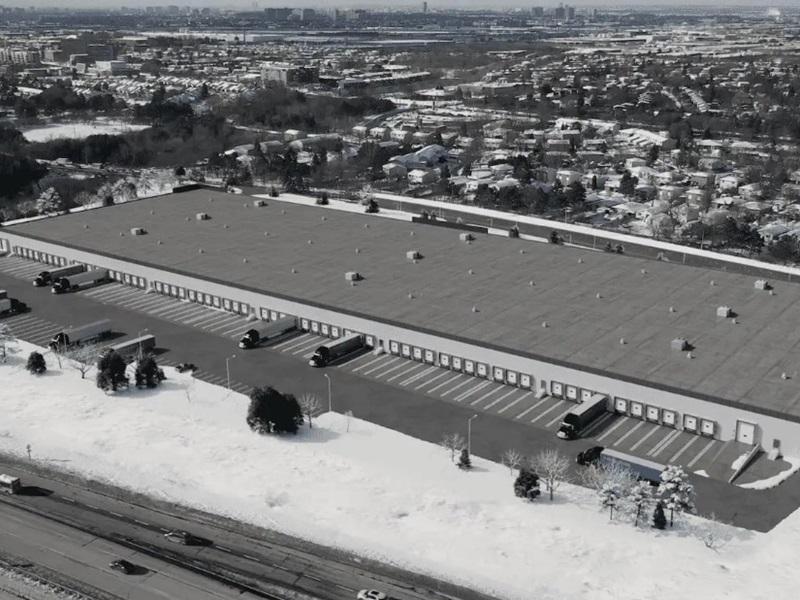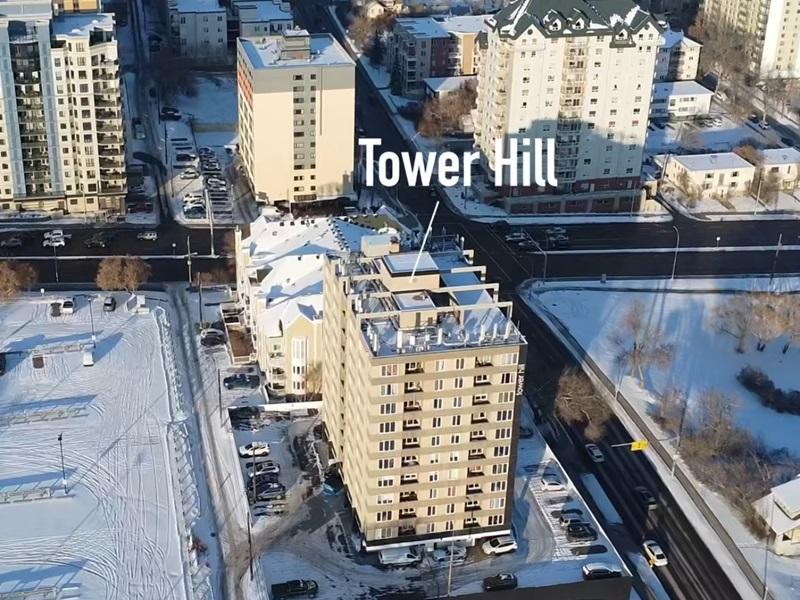
While there was major office leasing activity in downtown Toronto in Q1 of this year, that momentum evaporated during the next three months according to Newmark’s new 2Q '24 Downtown Toronto Office Market Overview.
Of downtown Toronto’s 85 million square feet of office space, 14.6 per cent of it was vacant the report states. That rate is a 24-year high.
The ongoing heightened vacancy is largely the result of deliveries of new supply, the office real estate cycle and structural changes in how tenants use office space due to technology. COVID-19 magnified all of these factors, according to the report from the commercial real estate advisor and service provider.
The year got off to an atypically strong start (approximately 1.4 million square feet of leasing) thanks to more than 622,000 square feet of pre-leasing in Phase 2 of CIBC Square.
More than half of that space involved a 327,000-square-foot lease signed by CPP Investments, which will move from its current headquarters at 1 Queen St. E. While that represents a major lease transaction, it also leaves open the question of what will happen at the class-A 1 Queen when CPP vacates the building, which it currently owns.
Q2, however, was the weakest in the past decade in total square footage leased downtown, at approximately 200,000 square feet, which the report's authors say doesn’t bode well for absorption in the back half of the year.
"Absorption is the final result of many variables and as a result we can see varying amounts of absorption on a quarterly basis. One quarter doesn't necessarily define a market and in this case, we saw significant absorption in the first quarter and less so in the second quarter based on the timing of when tenants occupied space," Newmark director and head of Canada research Andrew Petrozzi wrote in an e-mail interview with RENX.
"We would need to see results for multiple quarters before a trend could be identified."
Downtown south and financial core performed best
The market does continue to see strengths and weaknesses based on property class and location, he said.
“Trophy and class-A properties in downtown south and the financial core saw strong performance in the first half of 2024, while downtown north suddenly experienced more challenges than in previous years."
“Downtown west continues to show signs of improvement after a couple of years of rising vacancy and availability.”
Landlord incentives for class-B space remain in play as the delta between class-A and -B rents continues to widen due to rental rate erosion in less desirable class-B buildings and upward pressure on class-A rents due to tenant demand. The class-A vacancy rate has stabilized at around 13 per cent.
“Class-A office space is seeing strong tenant demand in many submarkets, capturing the majority of the core’s leasing activity and enjoying the tightest vacancy rates, particularly in downtown south at 7.2 per cent and in the financial core at 12.4 per cent,” Petrozzi wrote.
“Rents for class-A space are holding steady, and in some cases even increasing, while we are seeing rents come off some in class-B space. Most built-out spaces, model suites and full-floor opportunities, particularly in well-located class-A premises in downtown south and the financial core, have been leased, which has tenants considering space in warm shell or bare shell conditions.”
The class-B vacancy rate rose to 17.9 per cent, not far behind the 18.3 per cent class-C rate.
Sublease availability had declined from 5.6 per cent in the first quarter of 2023 before stabilizing in the first half of 2024 at around 4.5 per cent.
“Tenants seeking flexibility as well as shorter term and reduced rental rates started returning to the market,” Petrozzi wrote about the sublet market. “If the sublease space was built out and ready for occupancy with no delay or additional costs, it was all the more attractive to tenants.”
More office developments planned
The current office development cycle for space that started arriving in 2020 and runs through 2025 is set to deliver more than nine million square feet, with almost 2.6 million square feet still under construction.
Despite today's adverse market conditions, more than 4.5 million square feet of office space remains proposed in buildings larger than 250,000 square feet.
This includes:
- 890,000 square feet at 1 Yonge St.;
- 1.4 million square feet at 30 Bay St.;
- 450,000 square feet at 1 Front St. W.;
- 700,000 square feet at 200 Front St. E.;
- 270,000 square feet at 25 Liberty St.;
- 270,000 square feet at 251 Queens Quay E.; and
- 670,000 square feet at 212-220 King St. W.
“I’m unaware of any major office developments downtown that have been cancelled outright,” Petrozzi noted. “However, some developments may shift to alternative uses if the zoning permits and the building can accommodate those changes.”
Office building transactions have plummeted
Downtown core and periphery office sales came to a virtual standstill in the first half of 2024, totalling just $80.4 million with the $65 million sale of 70 York Street and the disposition of the iconic flatiron-shaped Gooderham Building at 49 Wellington St. E. for $15.4 million.
“Potential office building buyers were cautious in the first half of the year for a few reasons, including a lack of sale comparables in Toronto and across Canada, as well as outstanding macro-economic issues around interest rates and cost of capital,” Petrozzi observed. “Recall that interest rate cuts didn’t start until June, and these numbers from the first half reflect a more conservative financial outlook during a period of uncertainty about when the Bank of Canada would act.
“While workers are returning to the office in greater numbers each passing month, Toronto has been slower to recover than most other Canadian cities, which may also have a dampening effect on investors’ enthusiasm to acquire these assets at this current juncture in Toronto. That can and will change.”
Office sales totalled $1.6 billion in 2023, which represented a 21.5 per cent decline from 2022.
Minimal office condominium sales
Condominium office sales peaked between 2020 and 2022 in total dollar volume as construction was completed and transactions closed. The pre-sales of these units likely occurred during the period of record low office vacancy recorded in downtown Toronto between 2017 and early 2020.
A lack of space for lease combined with a low cost of capital helped sales of office condos as investments and a hedge against rising office rental rates typical of that period.
“Office condos have historically not been a popular form of ownership in Toronto and represent a minuscule portion of the market,” Petrozzi wrote. “While downtown leasing rates stabilize or even decline, and vacancy remains elevated, the demand for office condos generated by a tight office leasing market has diminished.
“Although declining interest rates typically boost buyer interest in office condos due to lower financing costs, the current supply and smaller developments will likely meet existing demand for now.”
EDITOR'S NOTE: This article was updated with an additional quote and context provided by Petrozzi.










